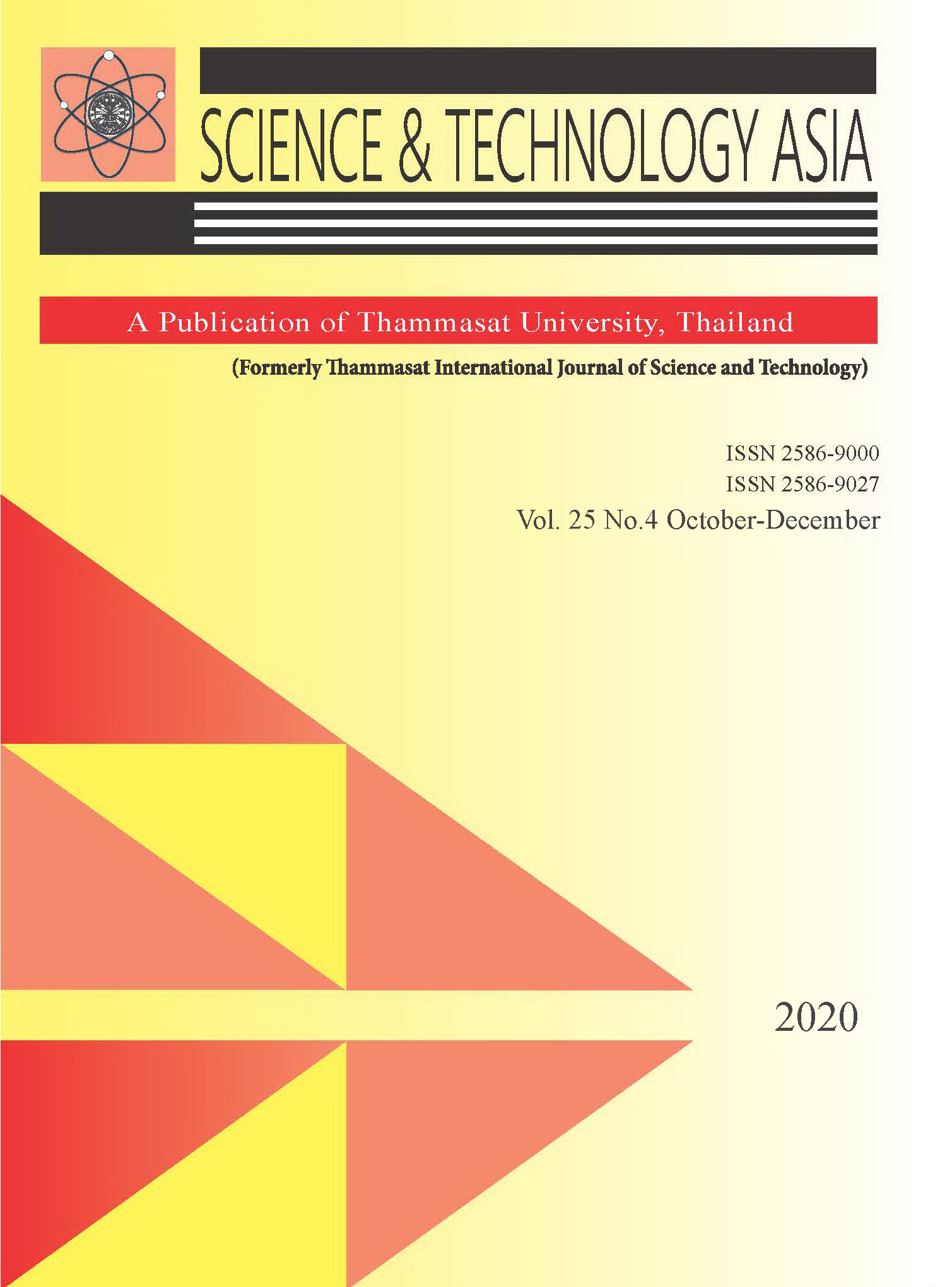In vitro Inhibitory Efficiency of Ventilago denticulata Willd. Dried Leaves Extract on Alpha-glucosidase, Alpha-amylase and Lipase and Antioxidant Activities
Main Article Content
Abstract
Ventilago denticulata Willd. has been used in many countries in Southeast Asia and South Asia for the folk medicine to decrease blood sugar and cholesterol. Therefore, the inhibition efficiencies against -glucosidase,
-amylase and lipase of ethanolic extract of V. denticulata dried leaves was evaluated using in vitro enzyme kinetic assays. The results showed that the inhibitory efficiency of
-amylase was significantly better than
-glucosidase and lipase (P
0.05) (IC50=3.29 (3.11-4.11), 11.08 (11.67-13.04) and 27.21 (19.33-28.81) mg/mL, respectively). However, the IC50 values of the extract were larger than that of acarbose and orlistat (P
0.05). The enzyme kinetic studies were analyzed using the Lineweaver-Burk plots. The results demonstrated that the inhibition behavior of standard acarbose and orlistat were competitive inhibition. On the contrary, the inhibition of the extract against
-glucosidase and
-amylase were mixed-type inhibition and that of lipase was non-competitive inhibition. Hence, the extract is less inhibitory efficacies to the enzymes than the standard inhibitors. In addition, the extract showed high DPPH antioxidant capacity (IC50 and TEAC are 0.0332 (0.0329-0.0333) mg/mL and 100.72 (100.38-101.83) mg Trolox/g dry weight, respectively), total phenolic, total tannin and total flavonoid contents (90.83 (88.10-94.25) mg GAE/g dry weight, 90.11 (89.34-91.66) mg TE/g dry weight, 62.71 (62.57-63.09) mg RE/g dry weight, respectively). The most abundant phenolic acids were protocatechuic acid, vanillic acid, sinapic acid, ferulic acid and gallic acid, whereas the major flavonoids were quercetin, rutin and catechin. Phenolic and flavonoid compounds, especially phenolic acids, quercetin and rutin, were responsible for the antioxidant capacity and enzymes inhibition because of the abilities to bind with the active sites, allosteric sites and enzyme-substrate complex. In conclusion, these findings were the first scientific data supporting to the folk medicine use of V. denticulata in order to decrease lipids and glucose levels in blood. Although, it cannot be replaced the drugs acarbose and orlistat, it may be applied as the functional food additive or developed to the herbal tea for the diabetes and obesity patients or the person who is in the glucose and lipid level controlling period. However, animal and human studies are required before implementing this plant as a functional food.


